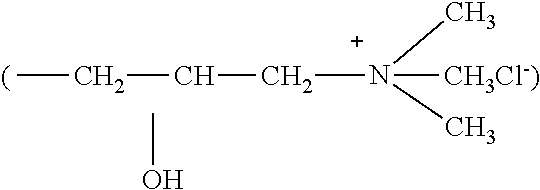Non-destructive method for algae contaminated water treatment and algae harvest or removal
a technology of algae toxins and algae, applied in the direction of biocide, separation process, filtration treatment, etc., can solve the problems of algae growth in various operations, release algae toxins, taste and odor problems in finished waters,
- Summary
- Abstract
- Description
- Claims
- Application Information
AI Technical Summary
Benefits of technology
Problems solved by technology
Method used
Image
Examples
example 1
Experimental Test on Filtration Treatment of Algae Bloom Water
[0053]Microcystis aerugenosa, one of the major blue-green algae species, was cultured in Bristol medium to OD430>2.0, and, then diluted about 10 times to OD430=0.2 using tap water in order to simulate the real algae density in natural water body heavily contaminated by algae bloom. 250 ml diluted algae sample was added in different beakers for Time-to-Filtration test. Chemicals were added to each beaker, well mixed by magnetic stirring for 2 minutes. Precipitations were observed in 5 minutes. 200 ml well mixed sample from each beaker was filtered through 0.22 μm filter unit (Corning 250 ml Filter System, Cat. No. 431096) using 51 kPa vacuum pump, and filtration time was recorded. All filtered samples were taken for COD and microcystin toxin analysis. Results for filtration time are shown in Table 1.
TABLE 1Standard Filtration TestTreatmentFiltration Speed (ml / min)none (control)10.5polymer A—10 ppm8.6F-1—50 ppm16.2F-1 50 pp...
example 2
Experimental Test on Filtration Treatment of Algae Bloom Water
[0058]Microcystis aerugenosa, one of the major blue-green algae species, was cultured in Bristol medium to OD430>4.0, and then diluted about 10 times to OD430=0.4 using tap water in order to simulate the real algae density in natural water body contaminated by algae bloom. 250 ml diluted algae sample was added in different beakers for Time-to-Filtration test. Chemicals were added to each beaker, well mixed by magnetic stirring for 2 minutes. Precipitations were observed in 5 minutes. 200 ml well mixed sample from each beaker was filtered through 0.22 μm filter unit (Corning, 250 ml Filter System, Cat. No. 431096) using 51 kPa vacuum pump, and filtration time was recorded. All filtered samples were taken for COD and microcystin toxin analysis. Results for filtration time are shown in Table 4.
TABLE 4Standard Filtration TestTreatmentFiltration Speed (ml / min)none (control)1.1polymer B—10 ppm3.1F-2—50 ppm5.5F-2 50 ppm / polymer ...
PUM
| Property | Measurement | Unit |
|---|---|---|
| water soluble | aaaaa | aaaaa |
| mass | aaaaa | aaaaa |
| concentration | aaaaa | aaaaa |
Abstract
Description
Claims
Application Information
 Login to View More
Login to View More - R&D
- Intellectual Property
- Life Sciences
- Materials
- Tech Scout
- Unparalleled Data Quality
- Higher Quality Content
- 60% Fewer Hallucinations
Browse by: Latest US Patents, China's latest patents, Technical Efficacy Thesaurus, Application Domain, Technology Topic, Popular Technical Reports.
© 2025 PatSnap. All rights reserved.Legal|Privacy policy|Modern Slavery Act Transparency Statement|Sitemap|About US| Contact US: help@patsnap.com



